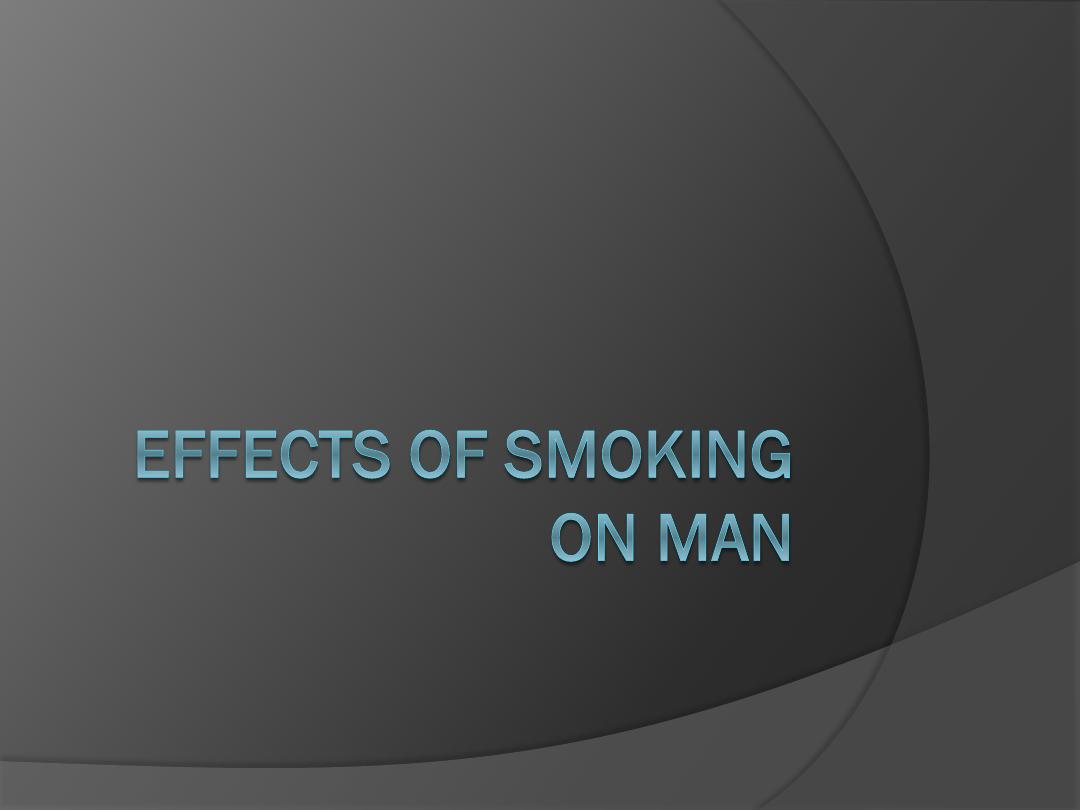
Lab 16
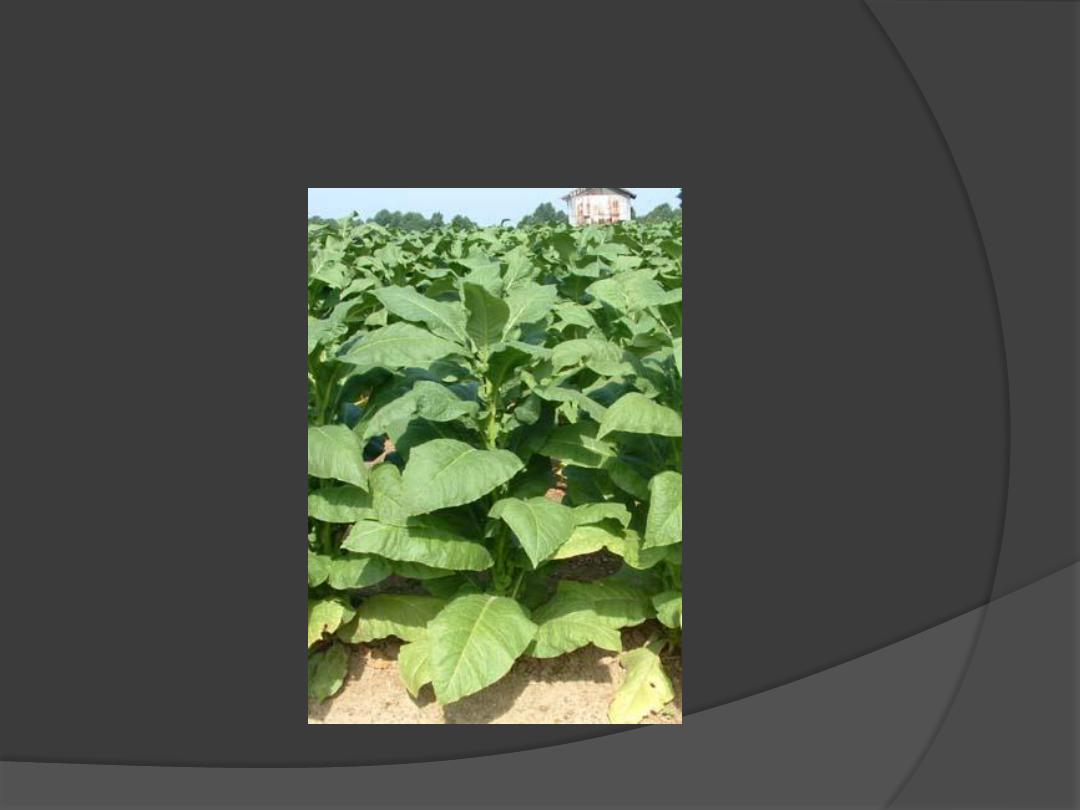
tobacco
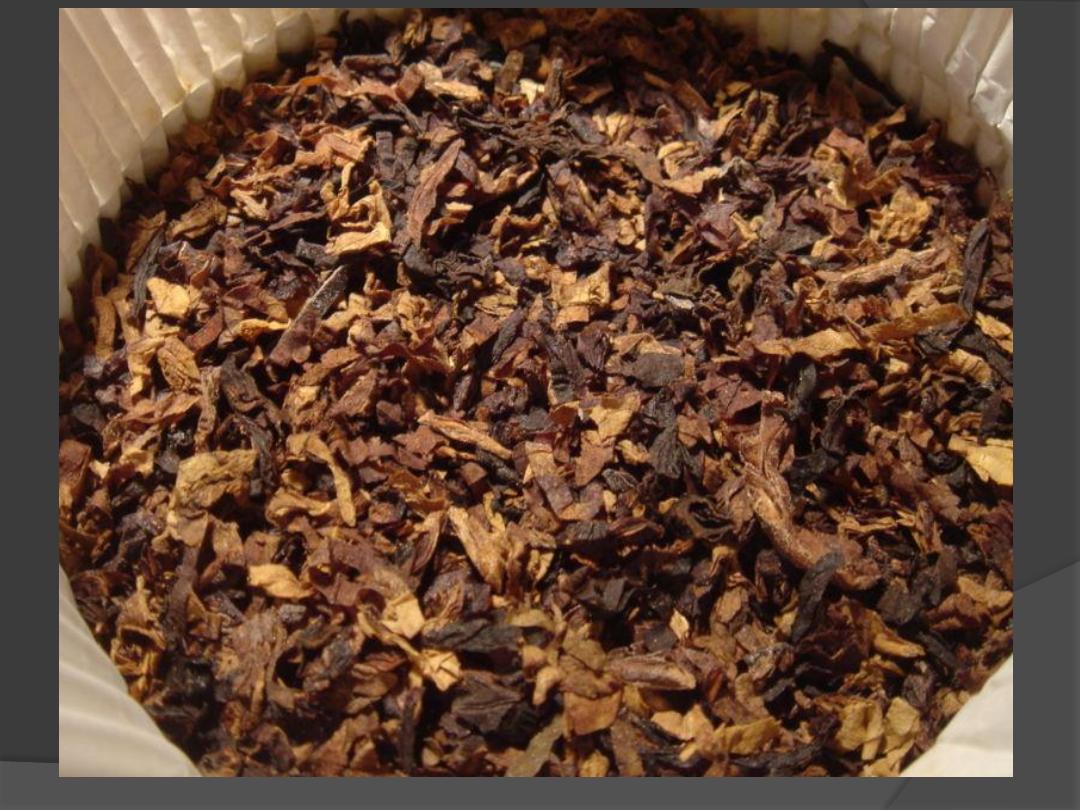
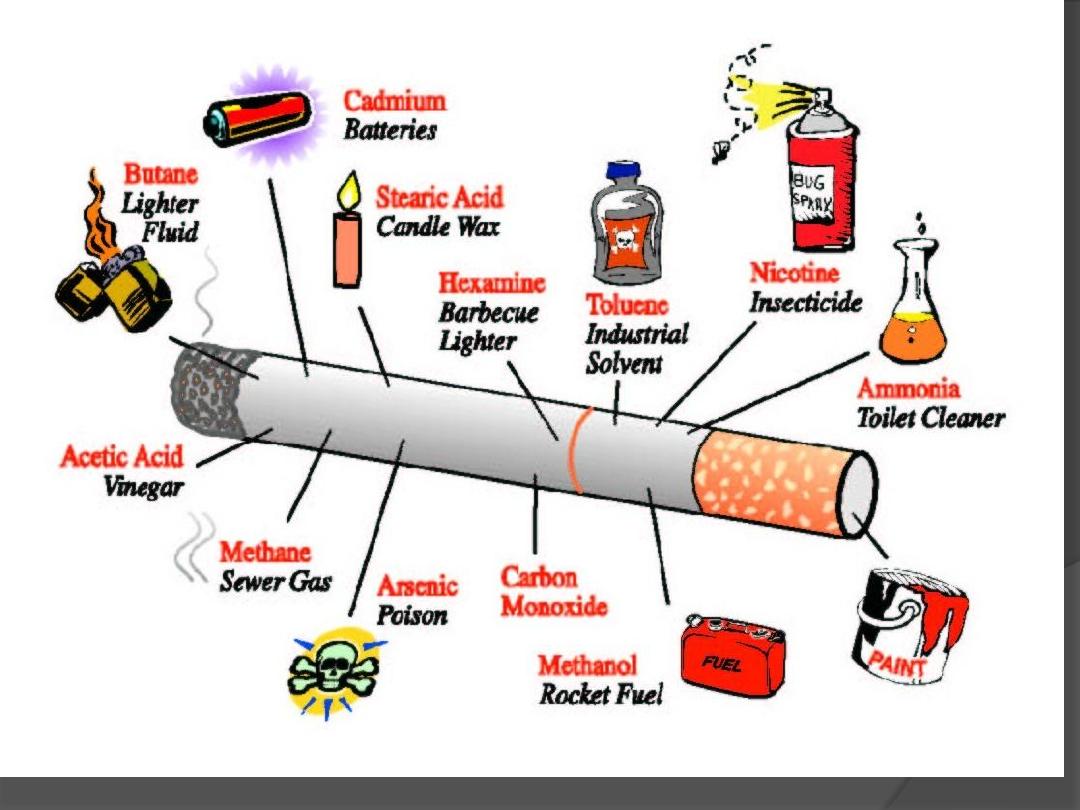

Nicotine
Nicotine is the active ingredient in tobacco.
Although this drug is not currently used
therapeutically(except in smoking cessation
therapy,), nicotine remains important,
because it is second only to caffeine as the
most widely used CNS stimulant and second
only to alcohol as the most abused drug. In
combination with the tars and carbon
monoxide found in cigarette smoke.

Mechanism of action:
In low doses,
nicotine causes ganglionic stimulation
by depolarization. At highdoses, nicotine
causes ganglionic blockade. Nicotine
receptors exist at a number of sites in
the CNS,which participate in the
stimulant attributes of the drug.

Actions:
CNS
: Nicotine is highly lipid soluble and
readily crosses the blood-brain barrier.
Cigarette smoking or administration of low
doses of nicotine produces some degree of
euphoria and arousal as well as relaxation.
It improves attention, learning, problem
solving, and reaction time. High doses of
nicotine result in central respiratory
paralysis and severe hypotension caused
by medullary paralysis .Nicotine is an
appetite suppressant.

The peripheral effects
of nicotine are complex. Stimulation of
sympathetic ganglia as well as the adrenal medulla
increases blood pressure and heart rate. Thus, use of
tobacco is particularly harmful in hypertensive patients. Many
patients with peripheral vascular disease experience an
exacerbation of symptoms with smoking. For example,
nicotine-induced vasoconstriction can decrease coronary
blood flow, adversely affecting a patient with angina.
Stimulation of parasympathetic ganglia also increases motor
activity of the bowel. At higher doses, blood pressure falls,
and activity ceases in both the gastrointestinal tract and
bladder musculature as a result of a nicotine-induced block
of parasympathetic ganglia.

Pharmacokinetics
: Because nicotine is highly lipid
soluble, absorption readily occurs via the oral
mucosa, lungs, gastrointestinal mucosa, and skin.
Nicotine crosses the placental membrane and is
secreted in the milk of lactating women. By inhaling
tobacco smoke, the average smoker takes in 1 to 2
mg of nicotine per cigarette (most cigarettes contain
6 to 8 mg of nicotine). The acute lethal dose is 60
mg. More than90 percent of the nicotine inhaled in
smoke is absorbed. Clearance of nicotine involves
metabolism in the lung and the liver and urinary
excretion. Tolerance to the toxic effects of nicotine
develops rapidly, often within days after beginning
usage.

Adverse effects(short term
effects)
The CNS effects of nicotine include
irritability and tremors. Nicotine may also
cause intestinal cramps, diarrhea, and
increased heart rate and blood pressure.
In addition, cigarette smoking increases
the rate of metabolism for a number of
drugs.
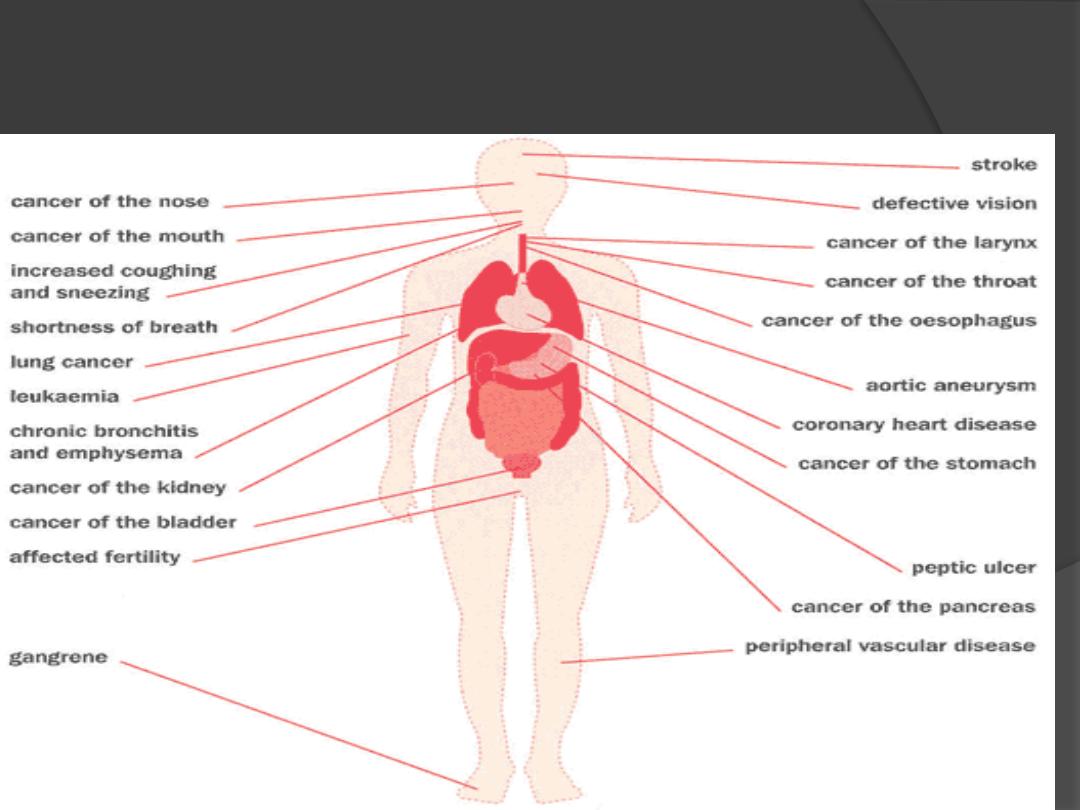
Toxic effects(long term effects)

Withdrawal syndrome
: As with the other
drugs in this class, nicotine is an addictive
substance, and
physical dependence on nicotine develops
rapidly and can be severe .Withdrawal is
characterized by irritability, anxiety,
restlessness, difficulty concentrating,
headaches, and insomnia.
Appetite is affected, and gastrointestinal
pain often occurs.

How to stop smoking
Start your stop smoking plan with
START
S
= Set a quit date.
T
= Tell family, friends, and co-workers that
you plan to quit.
A
= Anticipate and plan for the challenges
you'll face while quitting.
R
= Remove cigarettes and other tobacco
products from your home, car, and work.
T
= Talk to your doctor about getting help to
quit.
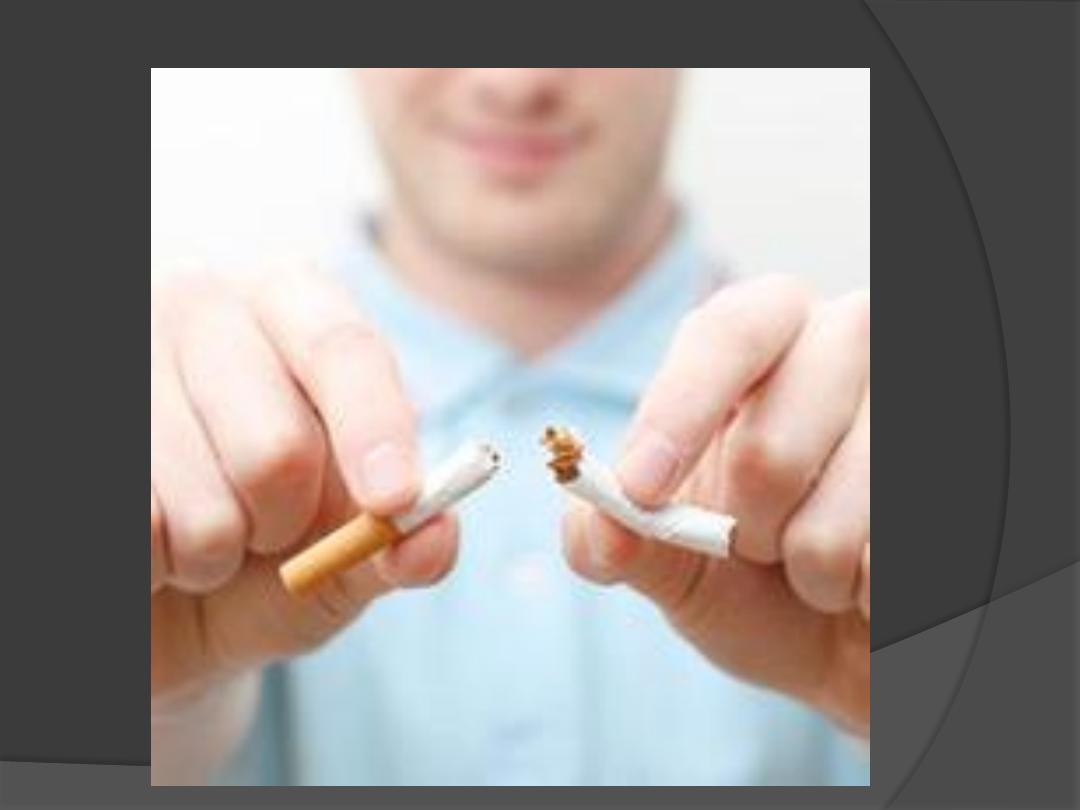

1-Medication therapy
:
A-Nicotine Replacement Therapy
involves "replacing" cigarettes with other
nicotine substitutes, such as nicotine gum
or a nicotine patch. It works by delivering
small and steady doses of nicotine into the
body to relieve some of the withdrawal
symptoms without the tars and poisonous
gases found in cigarettes. This type of
treatment helps smokers focus on breaking
their psychological addiction

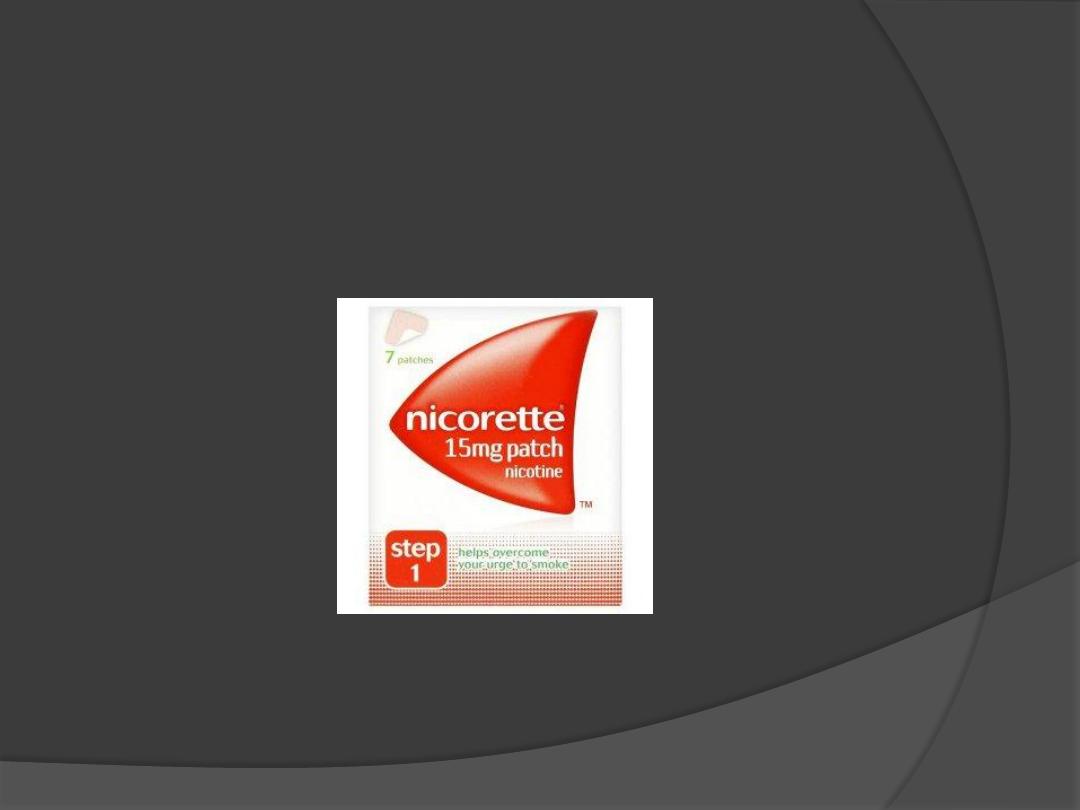
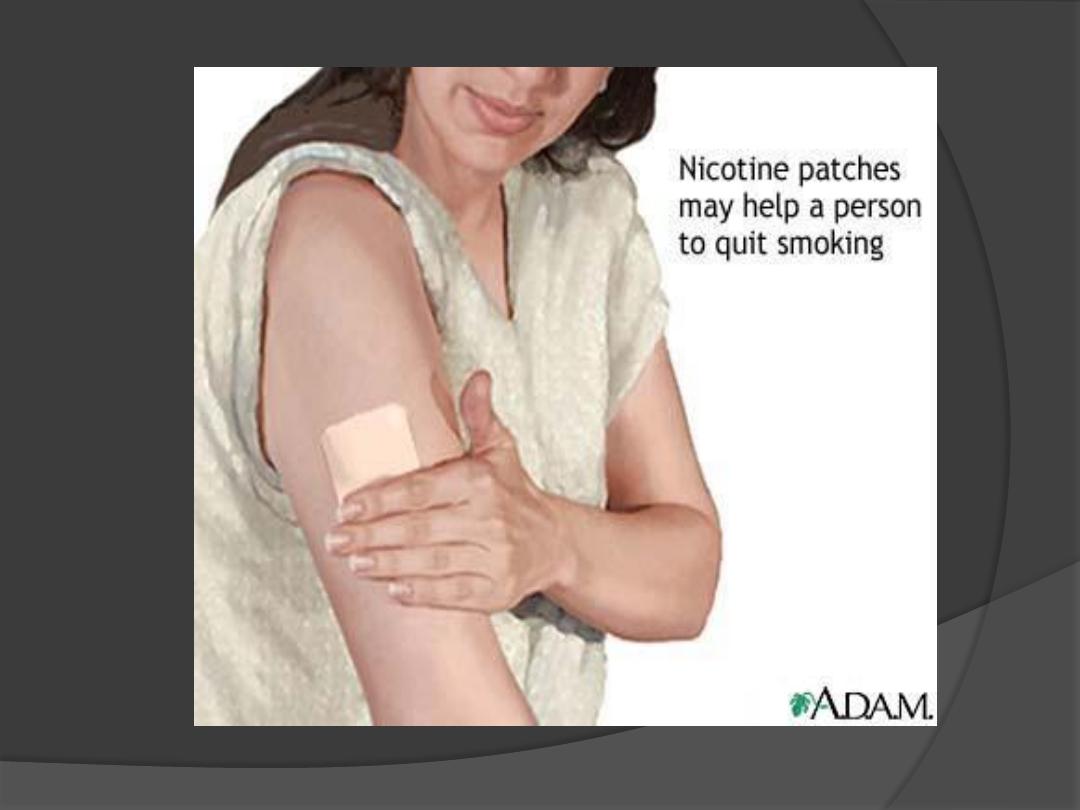
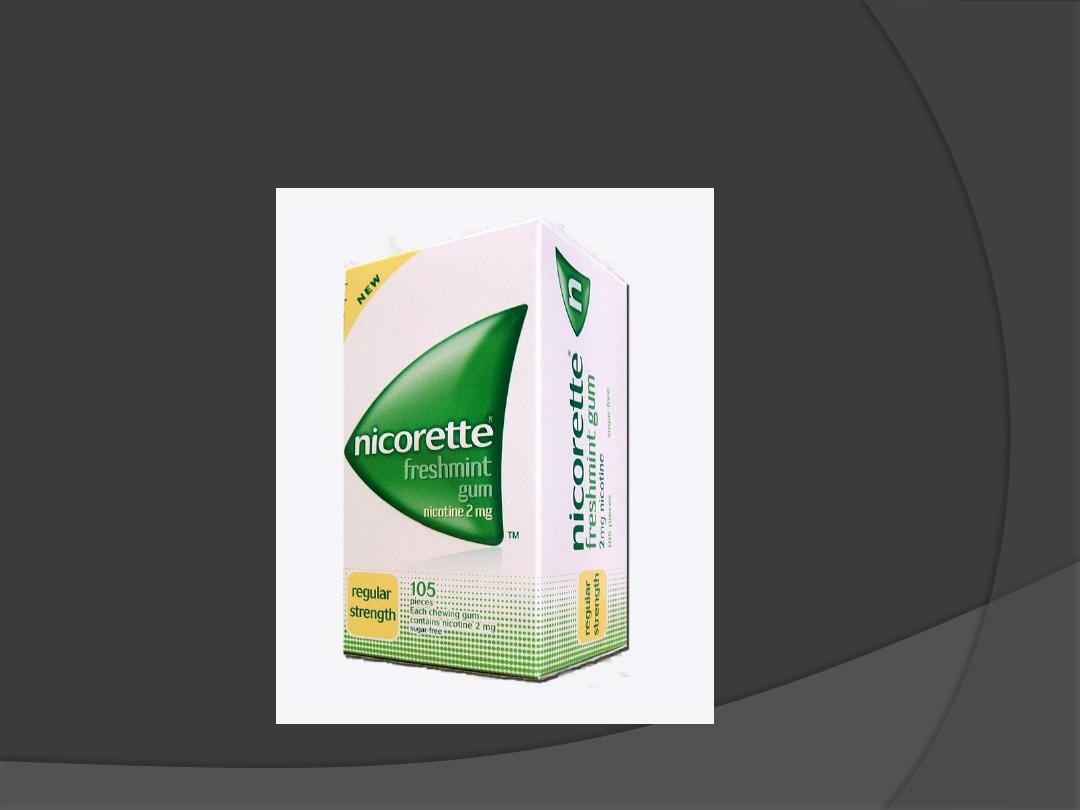
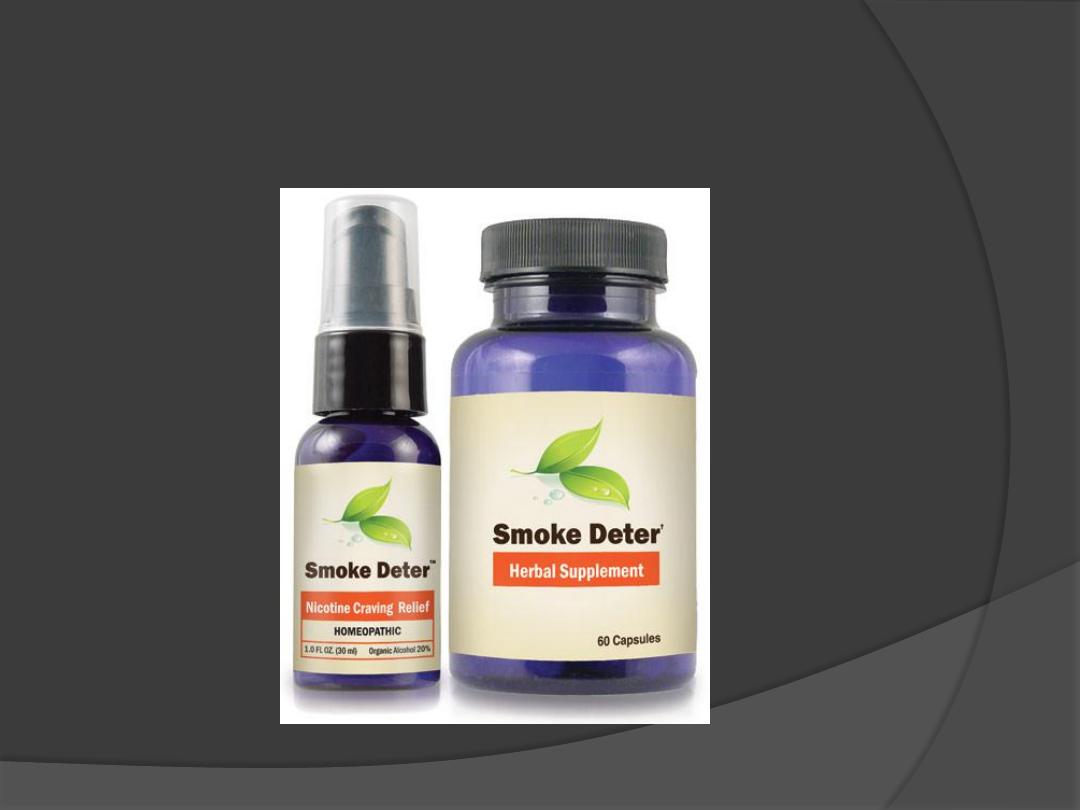

b- Non-nicotine therapy:
Bupropion
SR
– brand names Zyban
and Wellbutrin SR
Bupropion (Zyban) is an anti-depressant
medicine. It works on the chemicals in your
brain. It can help control nicotine cravings.
It does not contain nicotine.

2- Non medication therapy
Alternative Therapies
Procedures like hypnosis, acupuncture, and meditation
can address some of the mental and physical habits
you have developed around cigarettes. Some people
who have quit use these therapies alone, while others
use them in conjunction with medicines or nicotine
replacements.
Support Therapies
These include counseling and stop-smoking groups. Many
doctors and smoking-cessation specialists highly
recommend them, in addition to chemical or low-
nicotine methods, as an additional level of help.
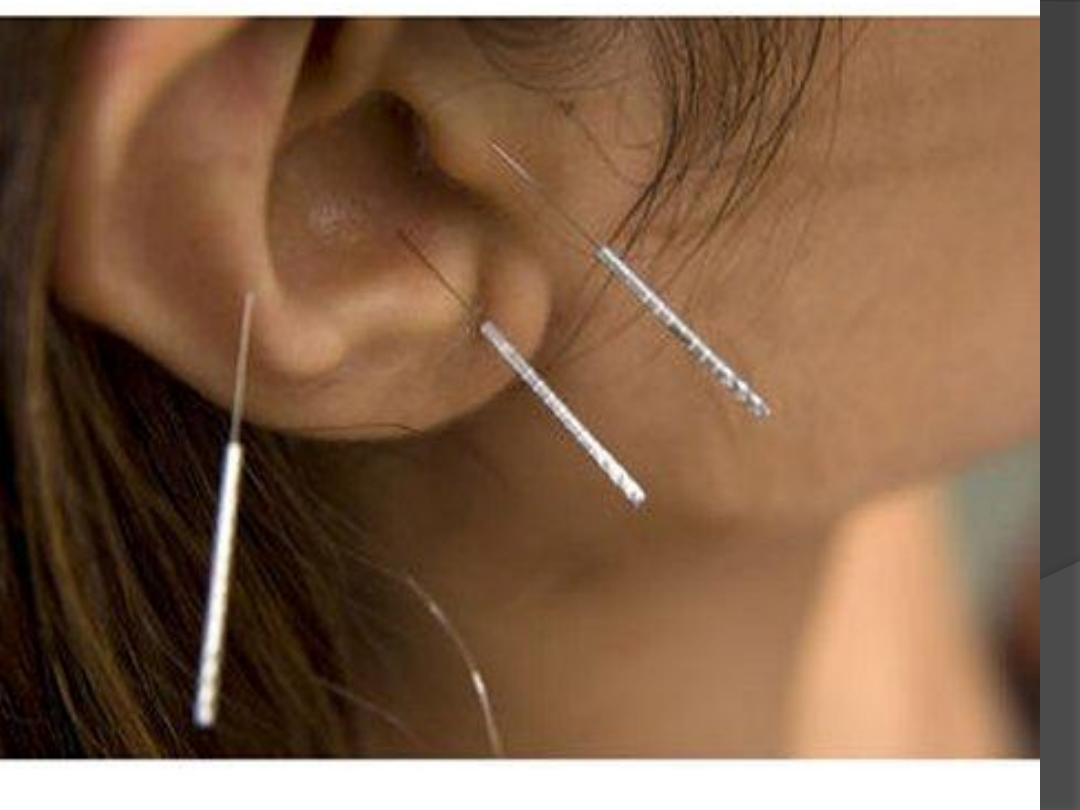

Tobacco chewing


Procedure
1- 3 volunteers: non-smoker, chronic
smoker, passive smoker.
2-before starting smoking: blood pressure
and pulse rate are measured.
3- after completing smoking Bl.pr & Pulse
rate measured again.( 5,10,15
minutes
4- record the difference between the effect
on all volunteers.
